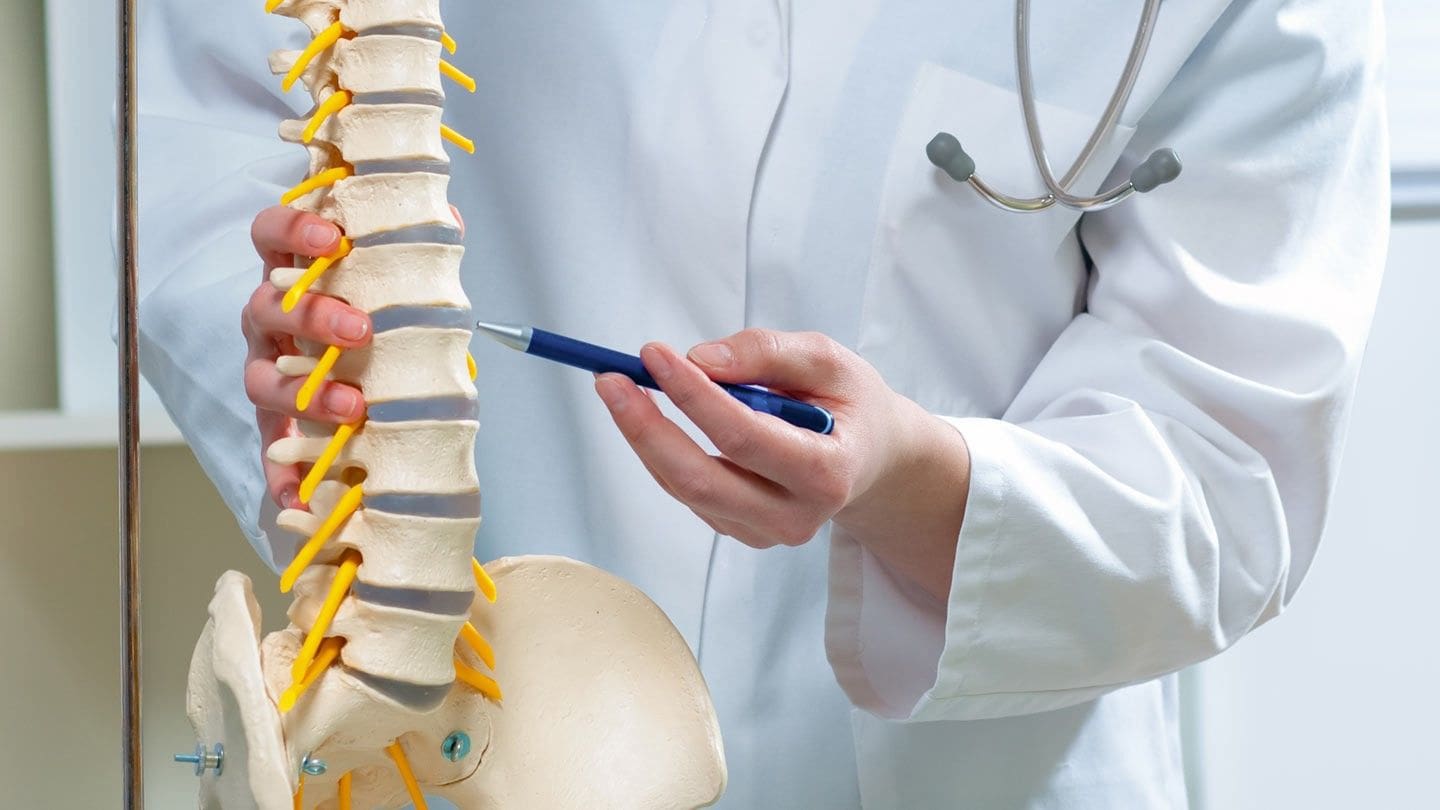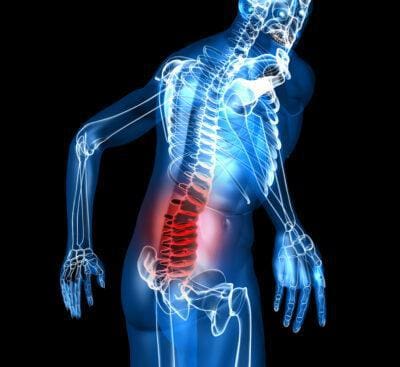Table of Contents
Introduction
One of the most prevalent types of pain worldwide is lumbar back pain, which affects many people and can be costly. This type of pain can be triggered by several environmental factors, which can overlap and cause referred pain throughout the body. Some factors linked to low back pain include those that impact people working for a living.
- Age
- Physical inactivity
- Excess weight
- Improper lifting
- Excessive sitting
- Stress
- Wear and tear on the spinal discs
When environmental factors cause spine misalignment, the surrounding muscles become weak, tense, and strained. This can result in the body shifting its weight to alleviate pain. However, many non-surgical treatments are available to relieve low back pain and realign the spine. In this article, we will discuss how lumbar back pain affects the body and how non-surgical therapies such as vertebral axial decompression can help to reduce it. We utilize and incorporate valuable information about our patients to certified medical providers using non-surgical treatments like vertebral axial decompression to relieve pain associated with the lumbar spine. We encourage and refer patients to associated medical providers based on their findings while supporting that education is a remarkable and fantastic way to ask our providers the essential questions at the patient’s acknowledgment. Dr. Alex Jimenez, D.C., comprises this information as an educational service. Disclaimer
What Is Lumbar Back Pain?
Research studies suggest that lumbar back pain is commonly experienced as a symptom in the midline or sacral region of the body. This pain can develop gradually due to unwanted pressure and weight on the spinal discs, which compresses the nerve roots surrounding the spinal cord. Based on additional studies, lumbar back pain is often categorized into two types for diagnosis.
- Specific low back pain: overlapping symptoms are caused by pathological mechanisms like, herniated discs, infections, musculoskeletal disorders, fractures, or disc degeneration.
- Non-specific low back pain: where overlapping symptoms are causing pain in the lumbar region without a specific cause. This form of low back pain causes referred pain to different locations.
Many individuals commonly suffer from non-specific lower back pain, which can be triggered by environmental factors and affect their daily function. However, there are methods to alleviate lumbar back pain without surgery.
From Injury to Recovery with Chiropractic Care-Video
Nobody must suffer from lumbar back pain, as many effective treatments are available to help realign the body back to normal. Non-surgical treatments like chiropractic care and decompression therapy can reduce the effects of lumbar back pain and realign the spine. These treatments can restore blood flow and nutrients to spinal discs, relieve the affected muscles, and be personalized to an individual’s health and wellness plan. This may include physical therapy to strengthen weak muscles surrounding the lumbar, nutritional advice to incorporate healthy whole foods to feed the body, and mindfulness practices to reduce the effects of stress on the body. Check out the video above to learn how to identify the root cause of health issues related to lumbar back pain and take steps toward your health and wellness journey.
What Is Vertebral Axial Decompression?
If you’re experiencing lumbar back pain, there are a variety of non-surgical and non-invasive treatments that can help alleviate the discomfort. One such treatment is decompression therapy, which involves gently pulling the spine to reduce pain and rehydrate the spinal disc. In this article, we’ll discuss vertebral axial decompression, a specific type of therapy. According to Dr. Eric Kaplan, D.C., FIAMA, and Dr. Perry Bard, D.C.’s book, “The Ultimate Spinal Decompression,” vertebral axial decompression can effectively reduce lumbar pain. Vertebral axial decompression (VAX-D) was developed by Dr. Allen Dyer, M.D., Ph.D. The book also explains that VAX-D uses a logarithmic time force curve to apply tension to the spinal column, bypassing muscle guarding reflexes in the lumbar spine and reducing disc pressure. Overall, vertebral axial decompression can be a useful treatment option for those with lumbar back pain.
How Does It Reduce Lumbar Back Pain?
Many individuals who suffer from lumbar back pain experience associated pain symptoms that affect their legs and feet. This is referred to as sciatica or leg pain associated with pressure on the spinal discs. Vertebral axial decompression is one effective solution to reduce this pressure and alleviate nerve root aggravation. Research studies have shown that this treatment can improve mobility, reduce pain in the lumbar spine, and minimize the effects of lumbar back pain. By lowering intradiscal pressure, vertebral axial decompression allows for better blood flow and nutrient absorption to rehydrate spinal discs.
Conclusion
Lumbar back pain is a common and costly issue that causes misalignment in the body by putting pressure on the spinal disc, resulting in referred pain in various body parts. Environmental factors can contribute to the development of this condition, causing muscles and nerves to become tense, weak, or strained. Fortunately, many treatments are available to alleviate lumbar spine pain and relieve pressure from the spinal discs. Decompression therapy is effective in restoring mobility and reducing pain. Vertebral axial decompression is a non-surgical option that gently stretches the spine and rehydrates the spinal disc, revitalizing the body.
References
Casser, Hans-Raimund, et al. “Acute Lumbar Back Pain.” Deutsches Arzteblatt International, 1 Apr. 2016, www.ncbi.nlm.nih.gov/pmc/articles/PMC4857557/.
Goose, E E, et al. “Vertebral Axial Decompression Therapy for Pain Associated with Herniated or Degenerated Discs or Facet Syndrome: An Outcome Study.” Neurological Research, Apr. 1998, pubmed.ncbi.nlm.nih.gov/9583577/.
Kaplan, Eric, and Perry Bard. The Ultimate Spinal Decompression. JETLAUNCH, 2023.
Koes, B W, et al. “Diagnosis and Treatment of Low Back Pain.” BMJ (Clinical Research Ed.), 17 June 2006, www.ncbi.nlm.nih.gov/pmc/articles/PMC1479671/.
Disclaimer
Post Disclaimer
Professional Scope of Practice *
The information on this blog site is not intended to replace a one-on-one relationship with a qualified healthcare professional or licensed physician and is not medical advice. We encourage you to make healthcare decisions based on your research and partnership with a qualified healthcare professional.
Blog Information & Scope Discussions
Welcome to El Paso's Premier Wellness and Injury Care Clinic & Wellness Blog, where Dr. Alex Jimenez, DC, FNP-C, a board-certified Family Practice Nurse Practitioner (FNP-BC) and Chiropractor (DC), presents insights on how our team is dedicated to holistic healing and personalized care. Our practice aligns with evidence-based treatment protocols inspired by integrative medicine principles, similar to those found on this site and our family practice-based chiromed.com site, focusing on restoring health naturally for patients of all ages.
Our areas of chiropractic practice include Wellness & Nutrition, Chronic Pain, Personal Injury, Auto Accident Care, Work Injuries, Back Injury, Low Back Pain, Neck Pain, Migraine Headaches, Sports Injuries, Severe Sciatica, Scoliosis, Complex Herniated Discs, Fibromyalgia, Chronic Pain, Complex Injuries, Stress Management, Functional Medicine Treatments, and in-scope care protocols.
Our information scope is limited to chiropractic, musculoskeletal, physical medicine, wellness, contributing etiological viscerosomatic disturbances within clinical presentations, associated somato-visceral reflex clinical dynamics, subluxation complexes, sensitive health issues, and functional medicine articles, topics, and discussions.
We provide and present clinical collaboration with specialists from various disciplines. Each specialist is governed by their professional scope of practice and their jurisdiction of licensure. We use functional health & wellness protocols to treat and support care for the injuries or disorders of the musculoskeletal system.
Our videos, posts, topics, subjects, and insights cover clinical matters and issues that relate to and directly or indirectly support our clinical scope of practice.*
Our office has made a reasonable effort to provide supportive citations and has identified relevant research studies that support our posts. We provide copies of supporting research studies available to regulatory boards and the public upon request.
We understand that we cover matters that require an additional explanation of how they may assist in a particular care plan or treatment protocol; therefore, to discuss the subject matter above further, please feel free to ask Dr. Alex Jimenez, DC, APRN, FNP-BC, or contact us at 915-850-0900.
We are here to help you and your family.
Blessings
Dr. Alex Jimenez DC, MSACP, APRN, FNP-BC*, CCST, IFMCP, CFMP, ATN
email: coach@elpasofunctionalmedicine.com
Licensed as a Doctor of Chiropractic (DC) in Texas & New Mexico*
Texas DC License # TX5807
New Mexico DC License # NM-DC2182
Licensed as a Registered Nurse (RN*) in Texas & Multistate
Texas RN License # 1191402
ANCC FNP-BC: Board Certified Nurse Practitioner*
Compact Status: Multi-State License: Authorized to Practice in 40 States*
Graduate with Honors: ICHS: MSN-FNP (Family Nurse Practitioner Program)
Degree Granted. Master's in Family Practice MSN Diploma (Cum Laude)
Dr. Alex Jimenez, DC, APRN, FNP-BC*, CFMP, IFMCP, ATN, CCST
My Digital Business Card




